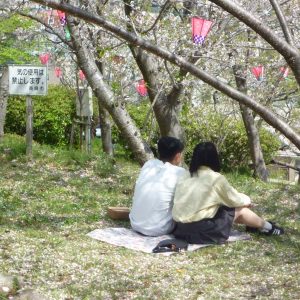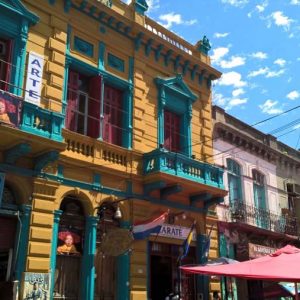The UK is not the only country with a royal celebration to look forward to this year. 2018 is a double celebration for the tiny Kingdom of Swaziland as they celebrate 50 years of independence and King Mswati III’s 50th birthday. Postage stamp sized Swaziland is a microcosm of the best Africa has to offer and is just a short drive from Johannesburg. South Africa’s friendly neighbour is extremely safe, easy to get around and despite being one of the smallest countries in the Southern hemisphere, more than makes up for its lack of size with a hugely diverse range of attractions and activities. Here are a few of my favourites.
The Marula Festival
Swaziland is one of the few remaining monarchies in Africa and embraces and upholds its own unique and ancient traditions. Both the monarchy and the people of Swaziland actively maintain and preserve a remarkable cultural heritage, experiences here are the real deal probably unmatched anywhere else in Africa. 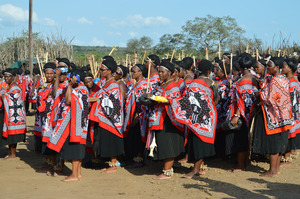 It’s a nation that revels in the spectacle of music, elaborate costume and dance with the best place to experience all three at one of the many festivals. I was fortunate to be in Swaziland in March this year at the time of The Marula Festival (one of the four largest). Local marula fruit is harvested and used to make beer to a traditional recipe which is then presented to the Queen Mother. This is a simplified description of the festival and nothing can quite prepare you for the site of 100,000 + women in traditional dress singing and dancing. I loved the fact that although visitors and spectators are always welcome, no concession was made to tourism. It was a totally unique and authentic experience, although thankfully I and the few other tourists watching were able to sit in a safe, ‘VIP’ enclosed area with clean loos! And able to roam freely to take photographs, even of the King.
It’s a nation that revels in the spectacle of music, elaborate costume and dance with the best place to experience all three at one of the many festivals. I was fortunate to be in Swaziland in March this year at the time of The Marula Festival (one of the four largest). Local marula fruit is harvested and used to make beer to a traditional recipe which is then presented to the Queen Mother. This is a simplified description of the festival and nothing can quite prepare you for the site of 100,000 + women in traditional dress singing and dancing. I loved the fact that although visitors and spectators are always welcome, no concession was made to tourism. It was a totally unique and authentic experience, although thankfully I and the few other tourists watching were able to sit in a safe, ‘VIP’ enclosed area with clean loos! And able to roam freely to take photographs, even of the King.
Mantenga Culture Village
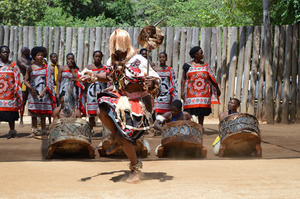 If your visit doesn’t tie in with a festival, then The Mantenga Cultural Village provides an opportunity to experience the traditional way of life. Set against the scenic backdrop of Nyonyane Mountain, this replica mid-19th century Swazi village has been constructed using authentic materials and techniques. A guided tour reveals how the huts are built and what each is used for. At a small showground behind the village a dance troop performs traditional sibhaca routines twice daily. It’s a lively show, comprising vigorous high kicking, pulsating drumming and some rousing singing. The village is an accurate recreation of what a prosperous traditional homestead would have looked like before the colonial era including the beehive huts.
If your visit doesn’t tie in with a festival, then The Mantenga Cultural Village provides an opportunity to experience the traditional way of life. Set against the scenic backdrop of Nyonyane Mountain, this replica mid-19th century Swazi village has been constructed using authentic materials and techniques. A guided tour reveals how the huts are built and what each is used for. At a small showground behind the village a dance troop performs traditional sibhaca routines twice daily. It’s a lively show, comprising vigorous high kicking, pulsating drumming and some rousing singing. The village is an accurate recreation of what a prosperous traditional homestead would have looked like before the colonial era including the beehive huts.
Stay in beehive hut
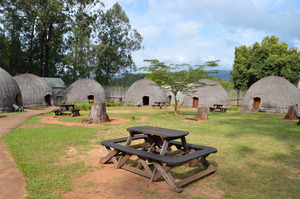 For a totally authentic African experience I can recommend a stay in a beehive hut. My short visit included a couple of nights in the surprisingly spacious domed huts, in pitch darkness (there are no windows) my imagination on overdrive, I thought I’d been transported into a fairy tale or hobbit home. Like the traditional huts there is an extremely low door, a defensive measure to guard against enemies but unlike the traditional ones, the tourist-friendly accommodation ones come equipped with an adjoining bathroom and electricity.
For a totally authentic African experience I can recommend a stay in a beehive hut. My short visit included a couple of nights in the surprisingly spacious domed huts, in pitch darkness (there are no windows) my imagination on overdrive, I thought I’d been transported into a fairy tale or hobbit home. Like the traditional huts there is an extremely low door, a defensive measure to guard against enemies but unlike the traditional ones, the tourist-friendly accommodation ones come equipped with an adjoining bathroom and electricity.
Phophonyane Falls
The Phophonyane Falls are by no means the largest or most spectacular I’ve encountered but there’s a lovely fable accompanying them. According to legend, for a young Swazi warrior to win a maiden’s hand, he must present her with a leopard skin. 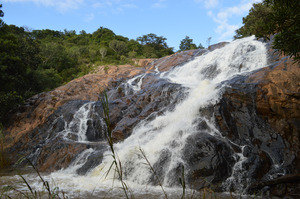 While hunting in the Gabolandlo Mountain, a certain youth was seized by witches who condemned him for trespassing by turning him into a white flower destined to bloom and die forever among the mountain passes. The grieving maiden’s tears form the Phophonyane River and Waterfall. During the summer when the flower booms, her sorrow is lessened, hence the bubbling and chuckling sound. The falls are situated in a lush indigenous forest with a network of well-maintained hiked trails allowing visitors to enjoy the stunning views. A stay at The Phophonyane Falls Ecolodge comes highly recommended with self-catering double story cottages, luxury safari tents, the ubiquitous traditional beehive huts and viewing decks for the less able to look out over the falls.
While hunting in the Gabolandlo Mountain, a certain youth was seized by witches who condemned him for trespassing by turning him into a white flower destined to bloom and die forever among the mountain passes. The grieving maiden’s tears form the Phophonyane River and Waterfall. During the summer when the flower booms, her sorrow is lessened, hence the bubbling and chuckling sound. The falls are situated in a lush indigenous forest with a network of well-maintained hiked trails allowing visitors to enjoy the stunning views. A stay at The Phophonyane Falls Ecolodge comes highly recommended with self-catering double story cottages, luxury safari tents, the ubiquitous traditional beehive huts and viewing decks for the less able to look out over the falls.
Riding in Mlilwane
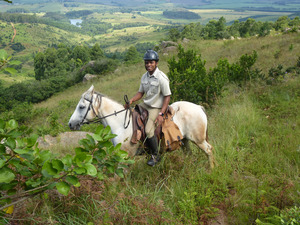 Mlilwane Wildlife Sanctuary which celebrated its 50th anniversary in 2014, is Swaziland’s oldest nature reserve and is known as the Mother of Conservation in the Kingdom. Riding is a wonderful way of exploring Swaziland, especially those areas which are inaccessible to vehicles. None more so than Execution Rock which can be enjoyed on a 4 hour ride at Mlilwane. Ancient stories are often told how this magnificent peak acquired its name. Swazis suspected of witchcraft or criminals were forced to walk of the edge at spear-point for their crimes. My guide and I rode through plains of lush green grass, swaying in the wind, alongside sociable zebra, spotted crocodiles basking in the sun (I was very grateful to be safely snuggled in a saddle and not on ground level) and then corralled the horses before a 15 minute steep climb to the top of the rock. This is an experience for relatively fit, adventure enthusiasts but the panoramic views, including those of the politically incorrectly named Sheba’s breasts make the last slog all the more worthwhile.
Mlilwane Wildlife Sanctuary which celebrated its 50th anniversary in 2014, is Swaziland’s oldest nature reserve and is known as the Mother of Conservation in the Kingdom. Riding is a wonderful way of exploring Swaziland, especially those areas which are inaccessible to vehicles. None more so than Execution Rock which can be enjoyed on a 4 hour ride at Mlilwane. Ancient stories are often told how this magnificent peak acquired its name. Swazis suspected of witchcraft or criminals were forced to walk of the edge at spear-point for their crimes. My guide and I rode through plains of lush green grass, swaying in the wind, alongside sociable zebra, spotted crocodiles basking in the sun (I was very grateful to be safely snuggled in a saddle and not on ground level) and then corralled the horses before a 15 minute steep climb to the top of the rock. This is an experience for relatively fit, adventure enthusiasts but the panoramic views, including those of the politically incorrectly named Sheba’s breasts make the last slog all the more worthwhile.
Sibebe Rock
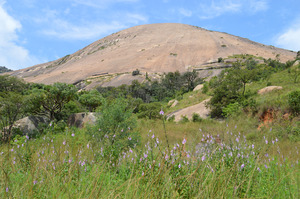 Located along the Pine Valley Road about 10 km from Mbabane (the capital) is another dramatic and unique rock. Sibebe Rock is second only to Uluru in Australia as the largest freestanding rock in the world and is estimated to be about three billion years old. (Makes us all feel positively youthful!)
Located along the Pine Valley Road about 10 km from Mbabane (the capital) is another dramatic and unique rock. Sibebe Rock is second only to Uluru in Australia as the largest freestanding rock in the world and is estimated to be about three billion years old. (Makes us all feel positively youthful!)
Swaziland really is Africa in a nutshell and for a tiny nation packs in an extraordinary variety of riches. Nature lovers can track down rhinos in the wild lowveld or seek out rare birds in the rugged highveld. Historians can visit the world’s oldest mine at Ngwenya or follow the colonial trail of the early settlers whilst culture vultures like myself can have fun at a festival. The Swazis are passionate about their way of life, traditions and people and 2018 promises to be a year full of celebration for this tiny Kingdom. As I found out at The Marula Festival, no-one can throw a party quite like Swaziland!
For general information on Swaziland visit www.thekingdomofswaziland.com
South African Airways fly daily to Johannesburg from where it is a 4 hour transfer with TransMagnific to Swaziland’s capital Mbabane.
For travel to Swaziland Silver Travel Advisor recommends Explore and Ramblers Walking Holidays.

